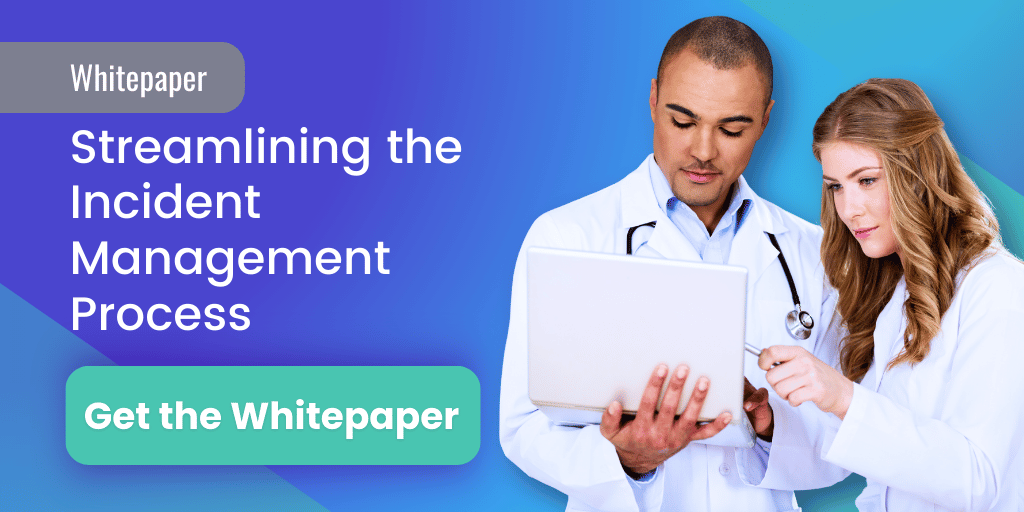5 min read
Incident Manager Software: A Guide to Selecting the Right System
Performance Health Partners
February 24, 2025

Effective management of incidents, near misses, and other safety events is crucial for maintaining the integrity of patient safety. Incident manager software is an essential tool in this regard, offering a structured way to gather, manage, and analyze data around safety events. But not all software is created equal. This guide will walk you through the key considerations and steps to ensure that you choose software that best meets your organization’s needs.
Understanding Your Incident Management Needs
Before you can select new incident manager software, it’s necessary to first evaluate your existing incident management processes. To understand where your current system lacks effectiveness, consider these questions, which will help guide your assessment and highlight the gaps in your existing approach:
- Consistency and Accuracy: Are incident reports being filed consistently and accurately across the organization?
- Response Efficiency: How quickly are incidents addressed and resolved after they are reported? Could these delays be mitigated with a better system? Is staff spending too much time on administrative tasks associated with incident management?
- User Experience: Do users find the system easy to use and navigate? How long does it take to complete a report?
- Integration: Does the current system integrate well with other critical healthcare technology, such as EHRs?
- Compliance Support: Does the system adequately support compliance with healthcare regulations and standards?
- Scalability: Can the current system scale effectively as the organization grows?
- Security: Is the data within the system securely managed and protected from unauthorized access?
This initial audit will highlight the gaps in your current approach and guide what you need in a new system.
Next, you’ll need to define objectives for your new system. What exactly do you want your incident manager software to achieve? Whether it’s ensuring compliance with healthcare regulations, improving the efficiency of incident reporting processes, or better integration with other data systems, clearly defining your objectives will help you narrow down your software options.
Of course, as you select new incident manager software, you’ll want to consider the insights from end users; input from nurses, administrators, and management are invaluable. That’s because these are the people who will use the system daily. Their feedback on shortcomings with the current system and features needed in a new system can drive more tailored software selection. Consider using surveys and questionnaires, focus groups, and/or one-on-one interviews to gather their input.
Key Features to Look for in Incident Manager Software
Now that you’ve assessed your existing system and defined your objectives for your future system, you’ll want to consider various features and functionalities to look for in a product. Below are some of the key components of a stand-out incident manager software.
User Interface (UI) & Usability
The effectiveness of incident manager software is greatly influenced by its user interface. The system should have a clear, intuitive interface that simplifies the process of reporting incidents, near misses, and other events.
This means straightforward navigation menus, minimal entry fields, and clear prompts that guide the user through the reporting process step by step. Look for software that is highly customizable and can be tailored to your unique care model.
The goal is to ensure that all employees, regardless of their role or technical skills, can report incidents promptly and accurately, minimizing the likelihood of user error and ensuring data integrity.
Integration Capabilities
Effective incident manager software must be capable of integrating seamlessly with other health IT such as electronic health records (EHRs). This integration is crucial for eliminating data silos and ensuring that incident data can be cross-referenced with other relevant patient and operational data. Integration enhances the consistency and reliability of data across units, departments, and facilities, enabling more comprehensive analytics and better decision-making throughout the organization.
Data Analysis & Reporting Tools
The software should come equipped with robust data analysis and reporting tools. These tools should allow healthcare organizations to monitor trends over time, identify recurring issues, and closely track the effectiveness of implemented improvement measures.
Both pre-built and customizable reports should be easily and quickly accessible to cater to the specific needs of different departments or compliance requirements, providing actionable insights that can lead to improved patient care and operational efficiencies.
Mobile Compatibility
Considering the mobile nature of healthcare work, where providers often move between different areas of a facility, or even into patients’ homes, mobile compatibility is essential. Incident manager software should be accessible on various devices, including smartphones and tablets in addition to desktop and laptop computers.
This feature ensures that healthcare professionals can report incidents in real time, right from the point of care, which can significantly enhance the timeliness and accuracy of incident reporting and follow-up.
Security & Compliance
The software must adhere to strict security protocols and comply with healthcare regulations, such as HIPAA in the United States. It should ensure that all sensitive patient information is securely managed, with robust data encryption, secure user authentication protocols, and regular security audits.
Compliance features should also include the ability to track changes, manage data access permissions, and provide detailed audit trails that can be used for internal reviews or compliance checks.
Evaluating Software Providers
With so many incident manager software vendors on the market, it can be difficult to determine the right product for your organization. Below are several considerations to help you separate the best from the rest.
Vendor Reputation & Experience
You should first consider the software provider’s history and expertise specifically within the healthcare sector. Look for vendors that have a proven track record of successful implementations in healthcare settings similar to your own.
Utilizing resources like KLAS Research’s “Best in KLAS Report” is invaluable. These annual reports provide unbiased insights into a vendor’s performance, user satisfaction, and system reliability, directly from other healthcare professionals. This information can give you a clearer picture of a vendor’s strengths and weaknesses, and how they align with your needs.
Customer Support & Training
The level and quality of customer support, along with the training that a vendor provides, can significantly impact the successful adoption and ongoing use of the incident manager software.
When participating in product demos, be sure to ask about the vendor’s training programs: Are they comprehensive? Do they offer on-site training, online modules, or a dedicated support manager? Effective training ensures that your staff can use the software efficiently and confidently.
Additionally, robust customer support that is easily accessible and responsive can greatly minimize downtime and resolve potential issues quickly, ensuring continuous operation.
Scalability
As healthcare organizations grow, their software needs will often change. A scalable incident manager software can handle increasing amounts of data and a growing number of users without degrading performance.
It’s helpful to discuss scalability options with potential vendors. Ask about the software architecture — is it cloud-based, which can typically scale more easily? Can the system accommodate new modules or features as needed? Understanding these factors will help ensure that the incident management software can evolve along with your organization.
Cost Considerations
Understanding the total cost of ownership is crucial when selecting software. With many vendors, the initial purchase price is only part of what you’ll pay for.
Be sure to inquire about all costs involved, including but not limited to, setup fees, training expenses, any necessary hardware, ongoing maintenance fees, and upgrade costs.
Some vendors, like Performance Health Partners, may offer inclusive packages, while others might charge additionally for support and updates. Transparent discussions about pricing will help avoid unexpected costs and ensure the software fits within your budget over its lifecycle.
Final Thoughts
Choosing the right incident manager software is the first step to improving patient safety and operational efficiency in your healthcare organization. By taking a thoughtful and intentional approach to the software selection process, you can ensure that the product you choose not only meets today’s needs but also adapts to future challenges.
Are you ready to improve your incident management processes? Connect with our team to get an in-depth look at why our best-in-class incident management system might be the best fit for your organization.



